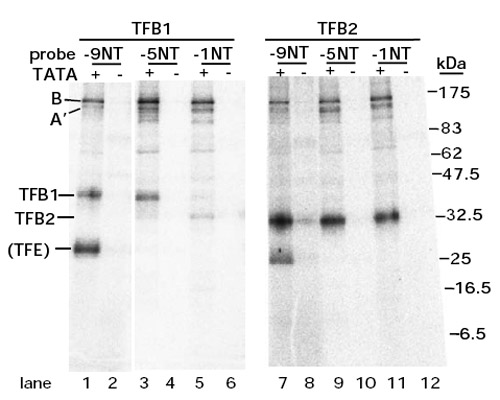Michael Micorescu, Sebastian Grünberg, Andreas Franke, Patrick Cramer, Michael Thomm, and Michael Bartlett
J. Bacteriol.,
2007,
doi:10.1128/JB.01498-07, published on 26.10.2007
The Journal of Bacteriology,
online article
The genome of the hyperthermophile archaeon Pyrococcus furiosus encodes two transcription factor B (TFB) paralogs, one of which (TFB1) has been characterized in transcription initiation. The second TFB (TFB2) is unusual in that it lacks recognizable homology to the archaeal TFB/eukaryotic TFIIB B-finger motif. TFB2 functions poorly in promoter dependent transcription initiation, but photochemical cross-linking experiments indicate that transcription complexes formed with TFB2 at the strong gdh promoter are similar in orientation and occupancy to those formed by TFB1. Initiation complexes formed by TFB2 display a promoter opening defect that can be bypassed with a pre-formed transcription bubble, suggesting a mechanism to explain the low TFB2 transcription activity. Domain swaps between TFB1 and TFB2 show that the low activity of TFB2 is determined mainly by its N-terminus. The low activity of TFB2 in promoter opening and transcription can be partly relieved by transcription factor E (TFE). The results indicate that the TFB N-terminal region, containing conserved Zn-ribbon and B-finger motifs, is important in promoter opening, and that TFE can compensate for defects in the N-terminus through enhancement of promoter opening.









